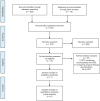Subacromial impingement syndrome: management challenges
- PMID: 30774463
- PMCID: PMC6376459
- DOI: 10.2147/ORR.S157864
Subacromial impingement syndrome: management challenges
Abstract
The painful shoulder is the most common condition seen in specialist shoulder clinics. It is often associated with lack of range of motion and reduced shoulder function. Lack of sleep and difficulties in performing basic daily life activities are common findings. Subacromial Impingement Syndrome (SAIS) has been considered as the most common cause of shoulder pain since it was described in 1852. Charles Neer, in 1972, described the presence of a "proliferative spur and ridge" on the undersurface of the acromion, which needs to be removed to improve the symptoms (acromioplasty). Neer's "impingement" hegemony was undisputed for at least 30 years. A more extensive knowledge of the pathogenesis of SAIS, however, has led authors to challenge the role of "impingement" in the shoulder pain and the role of surgical intervention. The aim of this review was to understand if there is still a role for surgical decompression in patients with SAIS. A literature review was performed in PubMed, PEDro, Embase, and the Cochrane Central Register of Controlled Trials using impingement, subacromial space, rotator cuff tears, tendinopathy, and tendinitis as key words. Randomized clinical trials (RCTs) with long-term follow-up comparing surgical intervention and conservative treatments in SAIS were preferred; however, prospective articles studying the outcome of surgical decompression and physiotherapy were also included. The majority of the studies showed no difference in the outcome between patients randomized to surgical decompression or conservative management. However, some studies reported better results after surgery, especially in the long term. Interpretation of the results is very difficult as most of the studies are of poor quality and have short follow-up. In our opinion, the type of subacromial lesion needs to be considered; this may offer an explanation to the difference in severity of symptoms and to the varying degrees of response to certain treatments, including surgery. Further studies are mandatory to better understand the role of surgery in SAIS.
Keywords: bursitis; impingement; rotator cuff; rotator cuff tears; supraspinatus tendon; tendinitis; tendinopathy.
Conflict of interest statement
Disclosure The authors report no conflicts of interest in this work.
Figures

References
-
- Linsell L, Dawson J, Zondervan K, et al. Prevalence and incidence of adults consulting for shoulder conditions in UK primary care; patterns of diagnosis and referral. Rheumatology (Oxford) 2006;45(2):215–221. - PubMed
-
- Bodin J, Ha C, Petit Le Manac’h A, et al. Risk factors for incidence of rotator cuff syndrome in a large working population. Scand J Work Environ Health. 2012;38(5):436–446. - PubMed
-
- Michener LA, Walsworth MK, Doukas WC, Murphy KP. Reliability and diagnostic accuracy of 5 physical examination tests and combination of tests for subacromial impingement. Arch Phys Med Rehabil. 2009;90(11):1898–1903. - PubMed
Publication types
LinkOut - more resources
Full Text Sources
Medical

